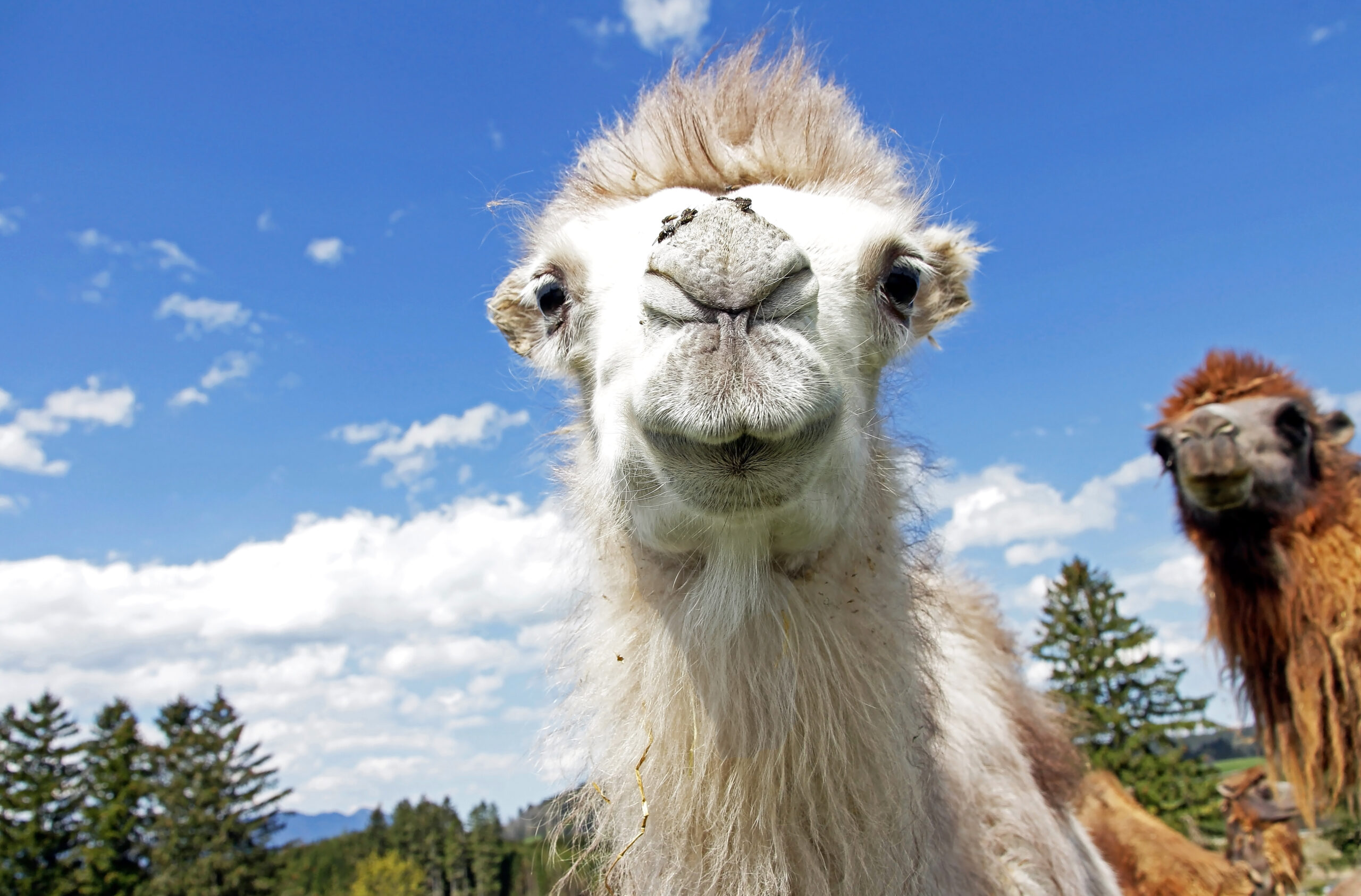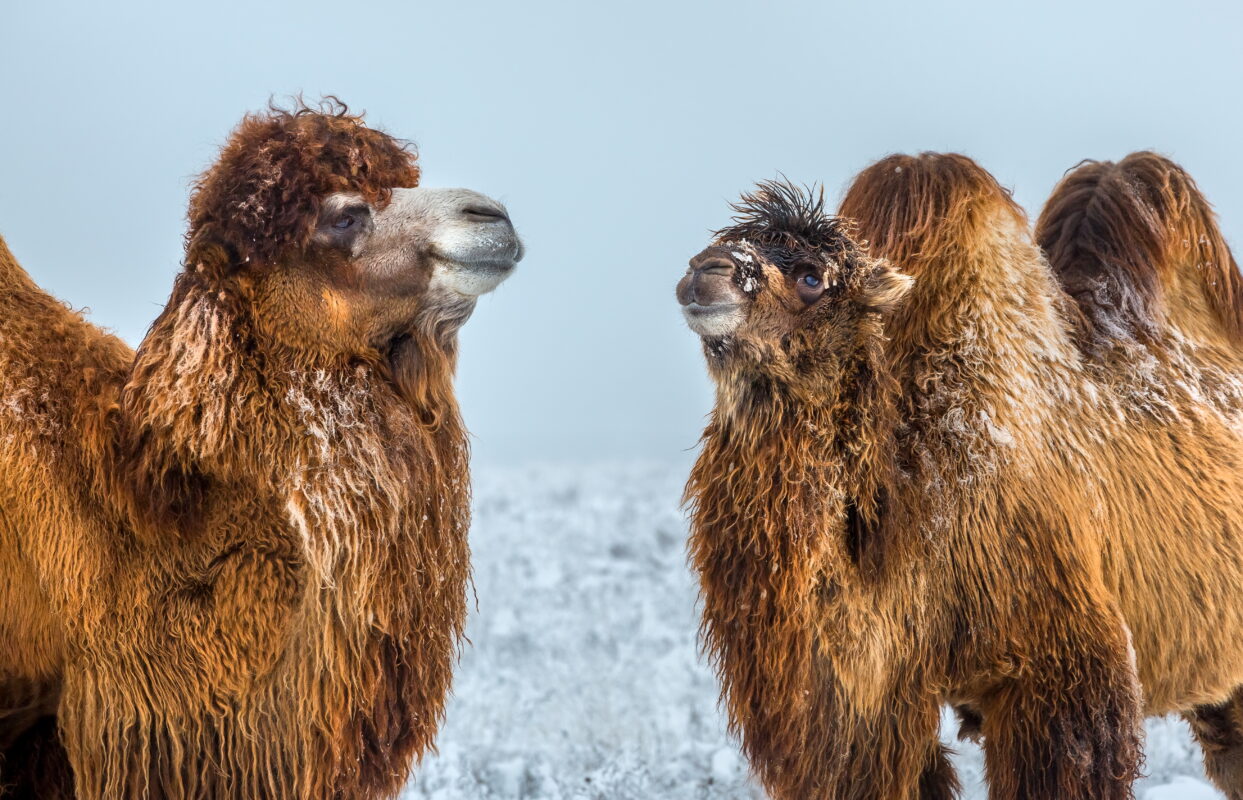Portrait of a camel in the winter, Stavropol steppe. Adobe Stock, by Фёдор Лашков

PRESENTS
The Bactrian Camel
By Katelin Kukk
Imagine an animal as big as a horse that looks as if it could have stepped off the page of a Dr. Suess book. With two humps on its back, long eyelashes, and a wooly coat, these creatures are called Camelus bactrianus or Bactrian camels. They have survived around four to five million years and have been domesticated for human use. The camels are best suited for survival in Asian deserts ranging from Afghanistan to China and the Mongolian steppes.

The Bactrian camel (Camelus bactrianus) is a large, even-toed ungulate native to the steppes of Mongolia. Adobe Stock, by Pises Tungittipokai
There are many characteristics of Bactrian camels that contribute to their survival in brutal climates. Their coats keep them insulated from extreme temperatures and their humps store fat for energy. They also have completely sealable nostrils and long eyelashes to keep sand or dust from entering their nose and eyes. The camel’s leathery mouth also helps them survive so they can eat plants that are tough and prickly. When food sources are low, they will even resort to eating rope and canvases.

There are many incredible adaptations that help camels survive in sandy environments. They are artiodactyls, meaning that their weight is balanced on an even number of toes, which in this case is two. Bactrian camels do not have hooves but instead have wide, webbed feet to walk across the soft terrain, making them one of the most ideal animals to live in the desert.

Conclusion
Overall, these truly unique and remarkable creatures have been able to survive millions of years, making them ideal primeval survivors. Their conservation status does not look promising for the future as wild Bactrian camels are listed as critically endangered species. Toxic contamination, competition with livestock for food, loss of water resources, have all contributed to the decline of these precious animals. On the other hand, domesticated Bactrian camels are thriving primarily because of their usefulness to humans. We can only hope that people continue to seek ways to protect and save all the Bactrian camels that are left.
– – –

NatEnvo was formed by BioTriad Environmental, Inc. to provide entertaining and informative media while keeping the wonders of nature in the public eye.

Spectacular creatures roamed the earth in the time long before the history of man. Species alive so far in the past, the only traces we find today are bits of rock and stone. Ages faded to dust in the wind. Yet there are those who remain. We call them Primeval Survivors. Do these remnants of the past hold the secrets of the ages?


